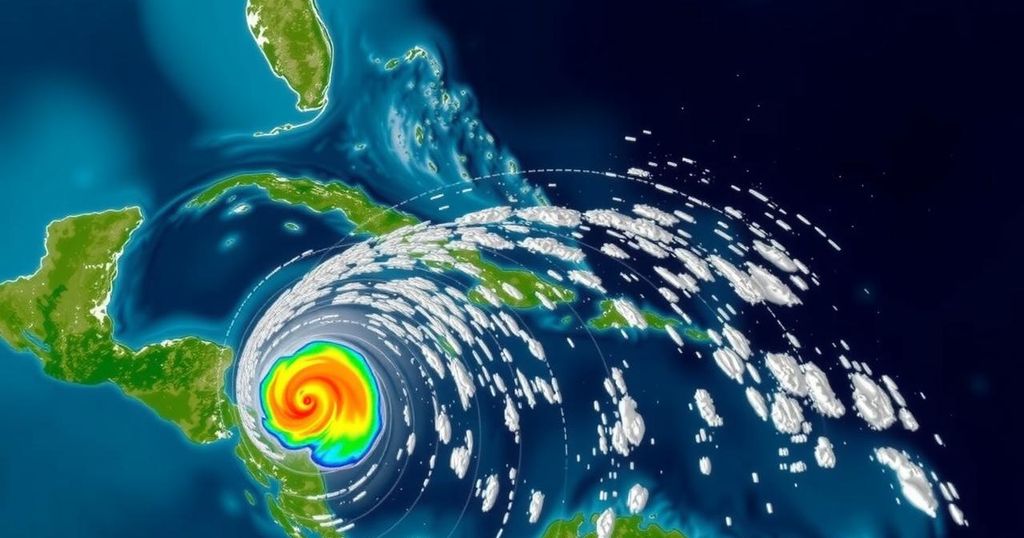Tropical Storm Rafael has upgraded to a Category 1 hurricane, tracking towards western Cuba with maximum sustained winds of 75 mph. Positioned southeast of Little Cayman, the storm adds to the difficulties faced by Cuba as it continues to recover from a previous hurricane that caused fatalities.
On Tuesday, Tropical Storm Rafael intensified into a Category 1 hurricane as it progressed past the Cayman Islands towards western Cuba. The National Hurricane Center in Miami reported that the storm was situated approximately 20 miles southeast of Little Cayman, boasting maximum sustained winds of 75 mph and a northwestern movement at 15 mph. This development poses further challenges for Cuba, which is grappling with ongoing blackouts while attempting to recover from the impacts of another hurricane that recently caused fatalities in the eastern region of the island.
The Atlantic hurricane season traditionally runs from June 1 to November 30, during which numerous tropical storms may develop. Hurricanes are categorized based on their wind speeds, with a Category 1 designation indicating sustained winds between 74 to 95 mph. For Cuba, which has a history of experiencing the adverse effects of hurricanes, any storm can result in grave humanitarian and infrastructural challenges, particularly following the recent devastation caused by another hurricane just weeks prior.
In summary, Tropical Storm Rafael has transitioned into a Category 1 hurricane, exacerbating Cuba’s difficulties in recovering from earlier disasters. The evolving storm system, marked by sustained winds of 75 mph, poses a significant threat as it approaches western Cuba. This situation underscores the vulnerabilities faced by communities in hurricane-prone areas, emphasizing the importance of disaster preparedness and response.
Original Source: www.santafenewmexican.com






